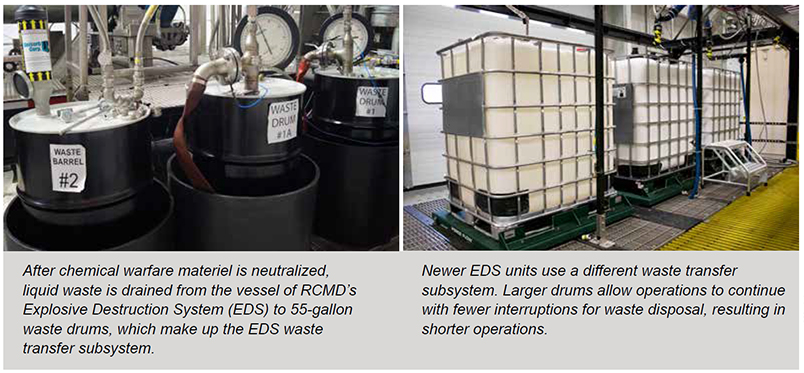Destruction of chemical warfare materiel results in the creation of secondary waste. The Recovered Chemical Materiel Directorate (RCMD) disposes of secondary waste at permitted commercial treatment, storage and disposal facilities.

Secondary Waste
This waste includes neutralents and remaining compounds that, although a byproduct of chemical weapons material destruction, are free of compounds controlled by the Chemical Weapons Convention (CWC) treaty. The handling and disposal of this waste remains consistent with methods used for disposal of hazardous and non-hazardous waste, which is regulated by federal and state agencies to ensure safe handling.
RCMD disposes of chemical materiel in a safe, environmentally compliant and cost-effective manner, ensuring compliance with the CWC. This may include chemicals and equipment used to produce some types of weapons, items recovered from military ranges and test kits once used to train Soldiers about chemical weapons.
